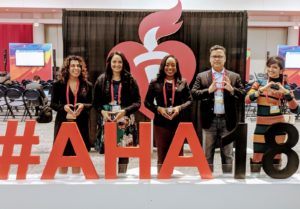Adding to Statins: Achieving Optimum Reduction of “Bad” Cholesterol
Atherosclerotic cardiovascular disease (ASCVD) is the number one cause of death in the Western world.[1] Since 2016, cardiovascular diseases have caused 1 in 3 deaths in the United States, and this trend is expected to continue in the future. There is a well-established relationship between ASCVD and elevated levels of low-density lipoprotein C (LDL-C), often called “bad” cholesterol because of its potential to accumulate in the blood vessels and contribute to the formation of fat plaques.[2] People with familial hypercholesterolemia (an autosomal dominant genetic disease caused by mutations in the LDLR, LDLRAP, APOB, and PCSK9 genes)[3] are also at risk for ASCVD due to their genetic predisposition to high cholesterol levels.
Currently, the standard of care is statin, a group of drugs that inhibits the HMGR enzyme, a key player in the cholesterol synthesis pathway. Over 55% patients undergo statin management to lower their LDL-C levels and consequently reduce morbidity and mortality.[4] However, 7 out of 10 patients on statins do not achieve their LDL-C goal. In addition, patients on statins still have residual risk of experiencing cardiovascular events and premature mortality.[5] This is due to multiple factors: nonadherence to statin management, which typically is consumed daily; drug intolerance due to the development of statin-associated muscle symptoms[6]; heterogeneity in response[7]; and others. As such, patients who are unable to control their cholesterol levels on maximum statin dose typically require an additional therapy.
Exploring additional therapies for patients who are unable to control their cholesterol levels on statins alone is the goal of the Add on Efficacy: Oral, Nonstatin Therapies for Lowering LDL-C Program in Scientific Sessions 2021, presented by Harold Bays, MD (Medical Director and President of the Louisville Metabolic and Atherosclerosis Research Center) and sponsored by Esperion Therapeutics. Until 2020, there was only one FDA-approved oral nonstatin therapy for ASCVD management: a drug called ezetimibe, which inhibits intestinal cholesterol absorption.[8] In 2020, bempedoic acid (Nexletol™) and bempedoic acid plus ezetimibe (Nexlizet™) were approved as adjuncts to diet and maximally tolerated statin therapy for patients with ASCVD or familial hypercholesterolemia who require additional lowering of LDL-C. Bempedoic acid inhibits ACL, a key enzyme in the cholesterol synthesis pathway. By week 12 of treatment, bempedoic acid and the combination of bempedoic acid and ezetimibe led to 17-18% and 38% and mean reduction of LDL-C, respectively, compared to patients given placebo and maximally tolerated statin dose.
Although statins have typically been the first line therapy for the management of ASCVD, current trends point to the need of developing additional and orthogonal therapies to achieve optimal LDL-C levels. To this end, multiple therapies are used clinically, including oral medications like bempedoic acid, ezetimibe, and bile acid sequestrants as well as other forms of therapeutics like PCSK9-inhibiting antibodies.[9] Beyond this session on non-statin therapies, Scientific Sessions 2021 provides other updates on current clinical management and emerging breakthroughs in cardiovascular health – make sure you tune in to other sessions on November 14-15, 2021!
Reference
[1] Nichols M, et al. (2014) Eur Heart J 35:2950–9
[2] Mihaylova, B. et al. (2012) Lancet 380:581–90
[3] Bouhairie, V. E. and Goldberg, A. C. (2015) Cardiol Clin 33.2: 169-79
[4] Bittner, V. et al, (2015) Journal of the American College of Cardiology, 66.17: 1873-1875
[5] Go, A. S., et al. (2014) Circulation 129: e28-e292
[6] Ward, N. C., et al. (2019) Circ Res 124:328–350
[7] Akyea, R. K. et al. (2019) Heart 105:975–981
[8] Miura, S. and Saku, K. (2008) Intern Med 47.13: 1165-1170
[9] Gupta, M. et al. (2020) Expert Opin investing Drugs 29(6):611-622.
“The views, opinions and positions expressed within this blog are those of the author(s) alone and do not represent those of the American Heart Association. The accuracy, completeness and validity of any statements made within this article are not guaranteed. We accept no liability for any errors, omissions or representations. The copyright of this content belongs to the author and any liability with regards to infringement of intellectual property rights remains with them. The Early Career Voice blog is not intended to provide medical advice or treatment. Only your healthcare provider can provide that. The American Heart Association recommends that you consult your healthcare provider regarding your personal health matters. If you think you are having a heart attack, stroke or another emergency, please call 911 immediately.”






